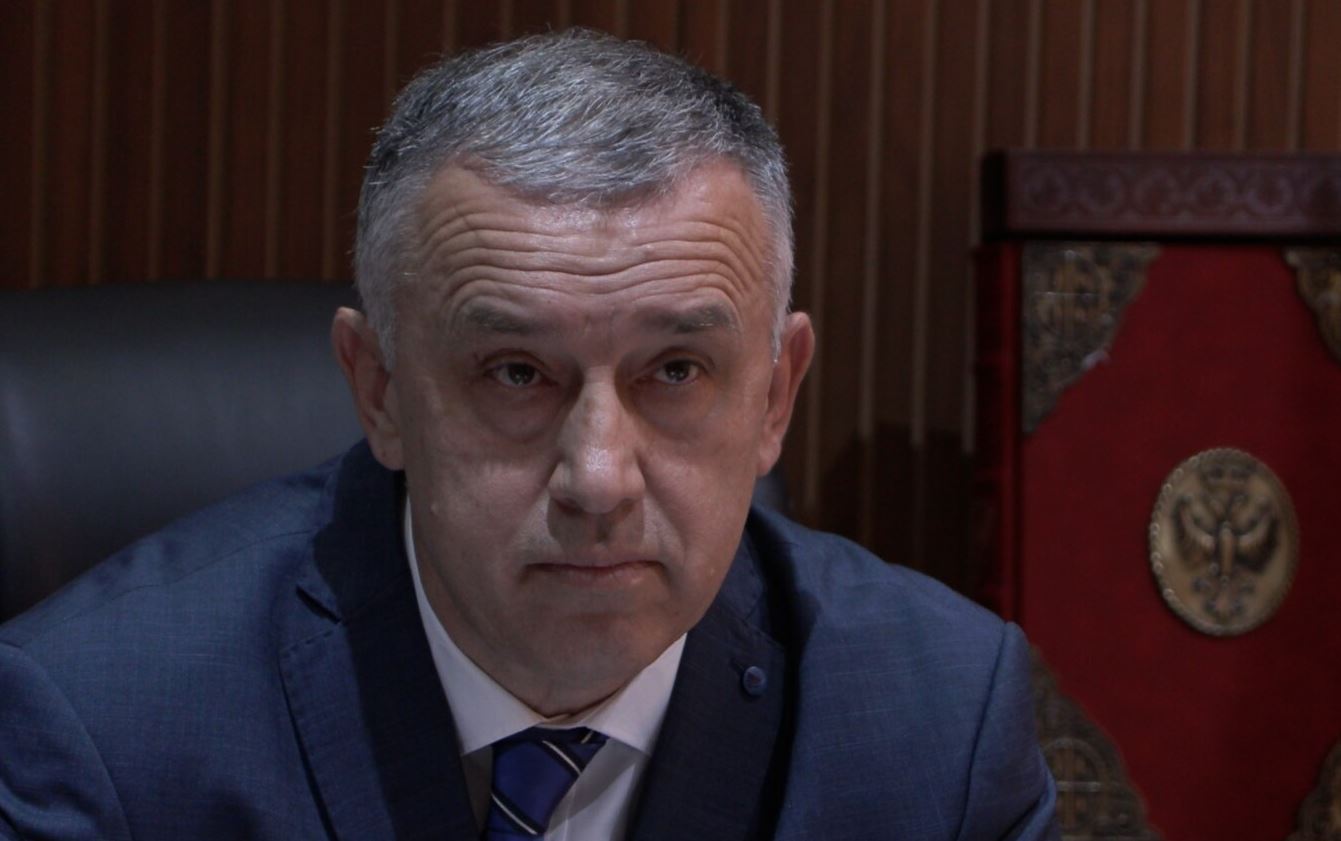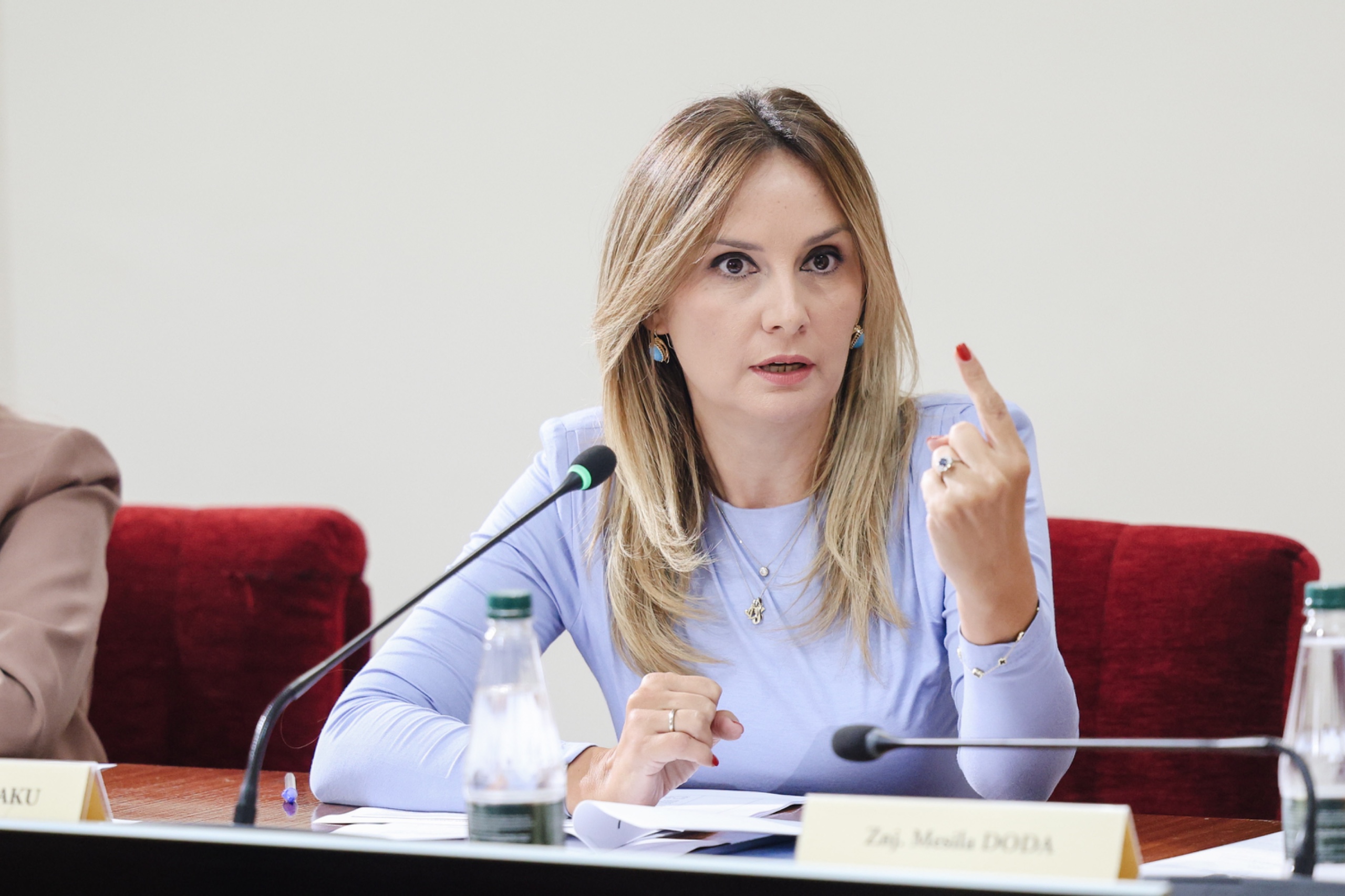In an interview with Kallxo Përnime, Emir Suljagic, head of the Srebrenica Memorial Centre, spoke about strained relations between Kosovo and Bosnia and Herzegovina and urged Kosovo to consolidate its war memorial efforts.
Emir Suljagic, a survivor of the Srebrenica genocide and the director of the Srebrenica Memorial Centre, called on Kosovo institutions to centralise war narratives and work quickly to secure war crimes confessions in an interview with Kallxo Përnime TV Programme, drawing parallels between the situations in Kosovo and Bosnia and Herzegovina and stating that time “is working against us”.
Suljagic’s call comes amidst Kosovo’s efforts to establish a memorial centre, similar to the one in Srebrenica, reflecting on the decades-long struggles for national recognition and the ongoing challenges of preserving and interpreting wartime experiences.
At the opening of BIRN’s ‘Reporting House’ exhibition in Kosovo’s capital, Prishtina, Suljagic emphasised the urgency of preserving memories and testimonies of human suffering.
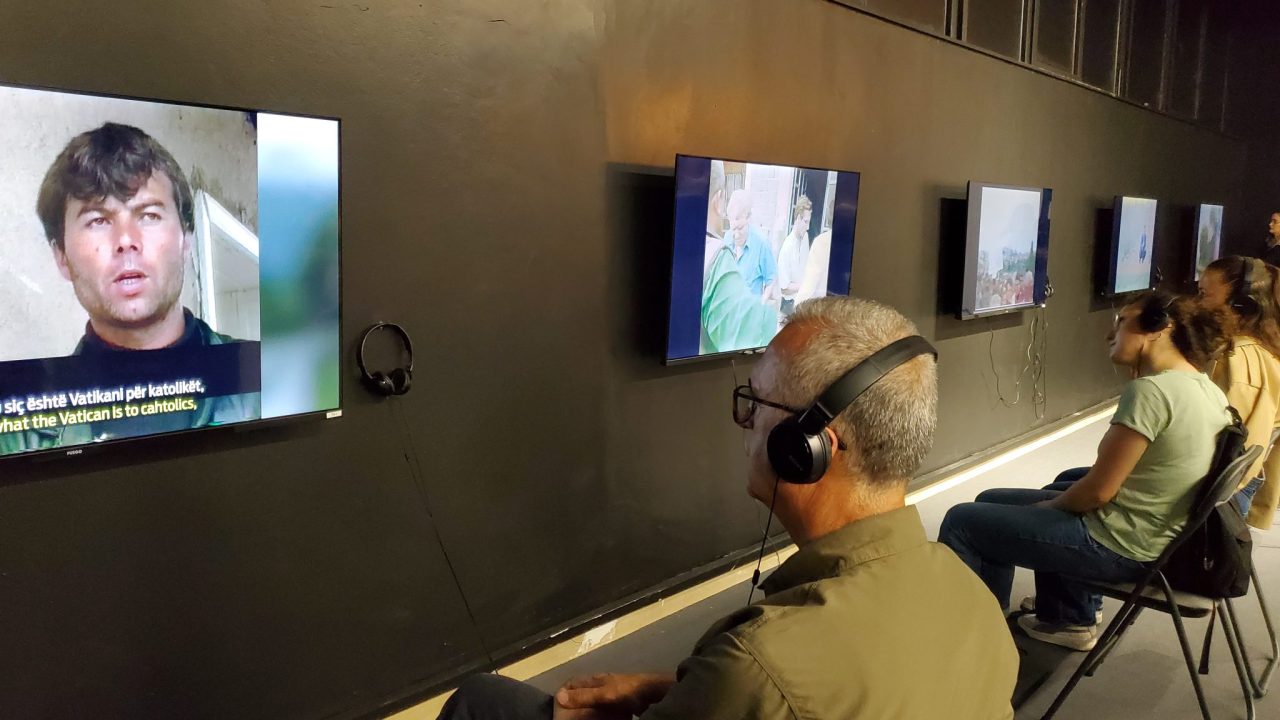
Visitors watching wartime reports. Photo: BIRN/Xhorxhina Bami
In July 1995, more than 8,000 Bosniak men and boys were killed in massacres by Bosnian Serb forces. In 2007, the International Court of Justice in The Hague characterised the crimes committed against Bosniaks from Srebrenica in 1995 as genocide.
Bosnian Serb wartime political and military leaders Radovan Karadzic and Ratko Mladic have both been sentenced to life imprisonment for genocide by the International Criminal Tribunal for the Former Yugoslavia.
In total, 49 individuals have been sentenced to more than 700 years in prison by courts in The Hague, Sarajevo and Belgrade for involvement in crimes related to the Srebrenica massacres.
Bosnian-Kosovo Relations
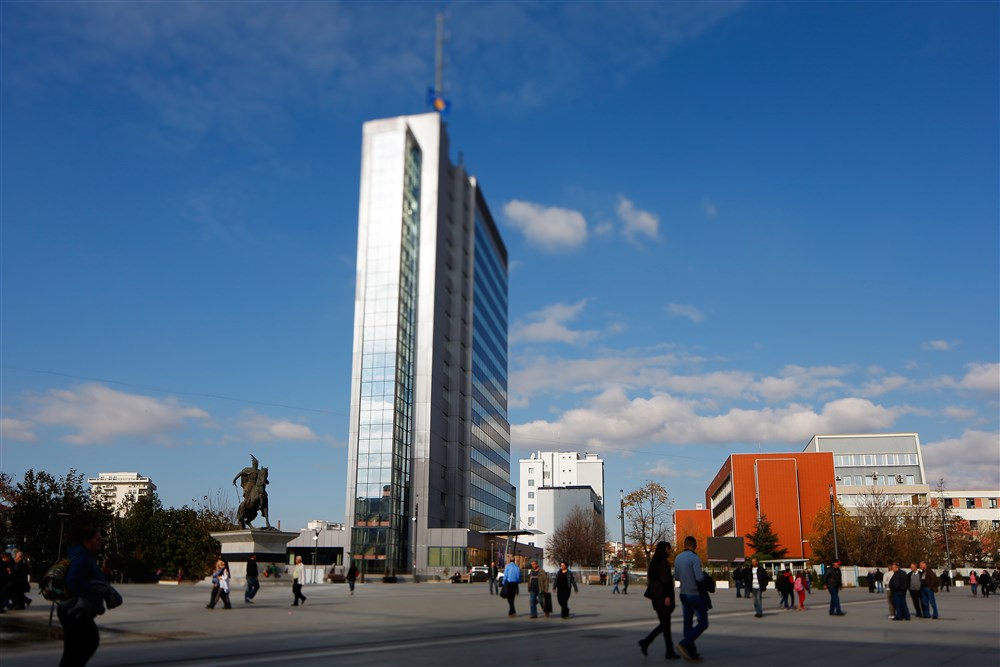
Photo: EPA/VALDRIN XHEMAJ
As a Bosnian citizen, Suljagic, a former journalist who has run the Srebrenica Memorial Centre since 2019, needed a special visa to come to Kosovo. The same visa requirements apply for Kosovo citizens who wish to visit Bosnia.
Freedom of movement between countries in the Western Balkans, first agreed to as a part of the Berlin Process in November 2022, has not yet been implemented because it is being blocked by Republika Srpska President Milorad Dodik.
The Berlin Process, a German-led initiative, is designed to facilitate regional cooperation between the six Western Balkans countries of Albania, Bosnia and Herzegovina, Kosovo, North Macedonia, Montenegro and Serbia – known as the WB6.
Suljagic considers the lack of relations between Kosovo and Bosnia and Herzegovina to be a success of Serbia’s foreign policy, and highlights that Kosovo has almost no connections to Bosnia and Herzegovina.
“I think the existing or perhaps non-existent bilateral relations between Bosnia and Kosovo are harming all of us. We haven’t done enough, even remotely, to create a relationship that I consider vital because we are part of the same neighbourhood. Why aren’t we finding ways to solve this visa regime? I think one of the greatest successes of Serbian politics in the region is that it has managed to distance Bosnia from Kosovo,” he said on June 22.
According to Suljagic, the disproportionate influence of Serbs on Bosnia’s foreign policy is a result of the Dayton Agreement.
“Now, we have a paradoxical situation where over 50% of the population is held hostage by 20-25% of the population,” he added.
The Long, Painful Work of Memorialising
[embedded content]
Suljagic explained that the establishment of the Memorial Centre in Srebrenica was an initiative which took more than two decades.
In the early post-war years, the primary concern was finding remains of the victims and determining where to bury them.
“It took almost a quarter of a century, a little less, to reach the point where we started thinking about what history we should tell, what narrative we should create,” Suljagic added.
As a survivor of the massacre, Suljagic often finds it difficult to direct the centre and sometimes wishes others would take over.
“Sometimes I wish there were other people who would do this job, but whether I like it or not, whether it traumatises me or not, whether it seems frustrating or not, I have to go back there”, he explained, adding that many families and survivors of the genocide do work with the centre.
“Dalmasa Salihovic, who is the Public Relations Officer, was 9 years old when her brother was taken from her arms by Serbian soldiers on July 13, 1995. There are others like her in the Memorial Centre, one of the most important being Azid Osmanovic, the young man who went to the UN and testified about his experiences,” Suljagic said.
Despite the challenges of his work, Suljagic emphasised the importance of now interpreting the war and genocide.
“In 1996, no one talked to us, or there were very few people who would talk to us, it was still very fresh, much harder to speak. Now, 29 or almost 30 years later, there is a kind of need, a certain need for people to be relieved.”
Being the ‘Other’ In Yugoslavia
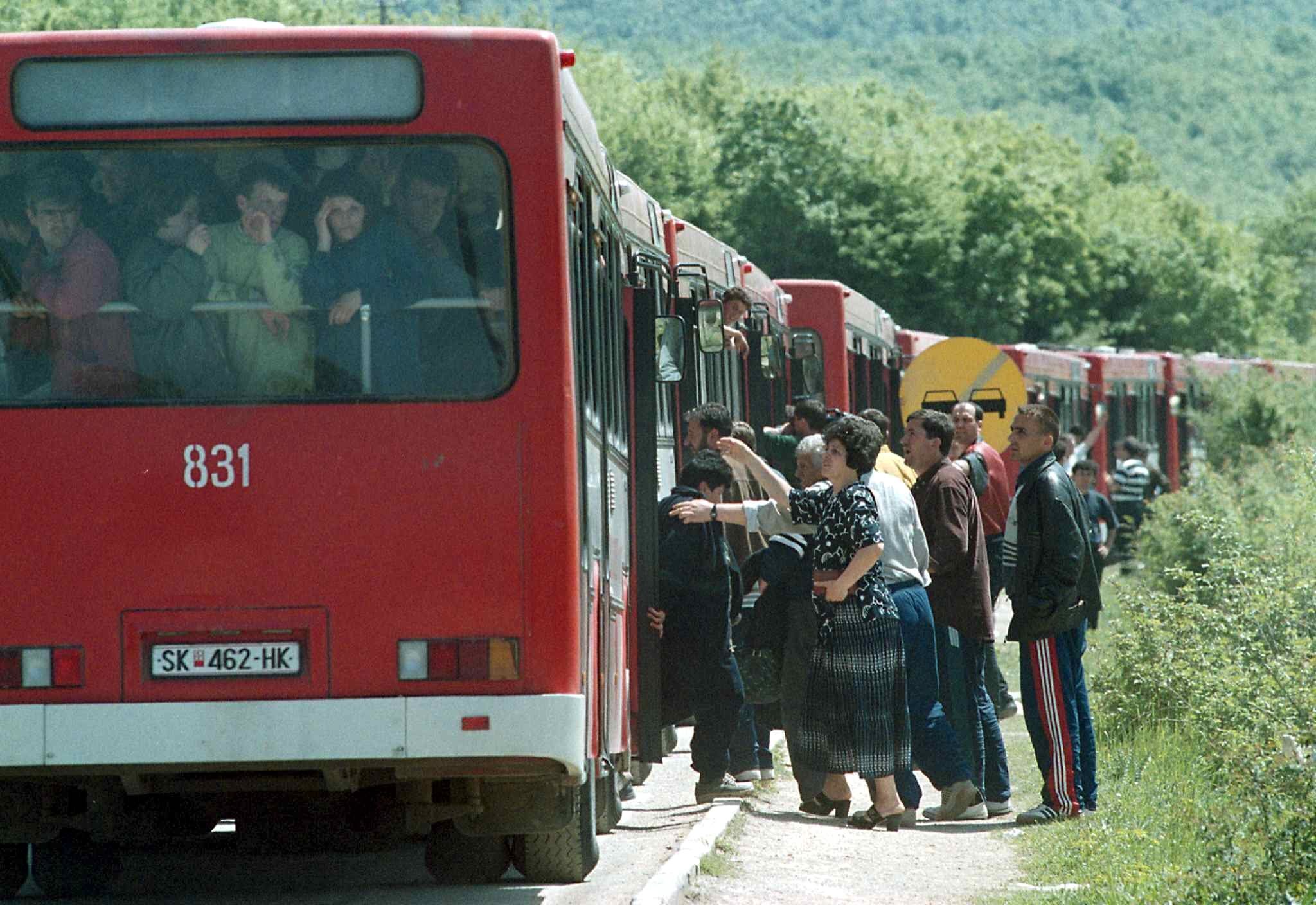
BLACE, MACEDONIA: Ethnic Albanian refugees from Kosovo board buses in Blace for permanent shelter and safety from war-torn Kosovo, Photo: EPA /GEORGI LIKOVSKI
Suljagic said that it was the Hague Tribunal that made him understand how Albanians were treated in Yugoslav Kosovo.
“For over 100 years, both Kosovo Albanians and Bosnians have been defined by enemies. I speak of a specific state formation, which has a history of the whole effort to eradicate, to eliminate Albanians from Kosovo and Bosniaks from Bosnia and Herzegovina,” he continued.
Suljagic emphasised Kosovo should centralise its war narrative.
“This memory may be fragmented, that’s fine, but if you have a fragmented story, then this is a problem. Centralise it, find a single place, an institution, a location,” he added.
He explained that,as a result of reporting on war crimes in the former Yugoslavia during 2022, he realised that Yugoslavia did not see Albanians as humans.
As an illustrative example, he recounted how the Serbian media had treated a man from Mitrovica and his young daughter who both gave evidence during the Milosevic trial in 2002.
“This girl, about 12 years old, had come wearing a black blouse and jeans. I heard Serbian journalists mocking her for what she was wearing,” he remembered.
“Kosovo’s phase in the (ICTY) trial was the first time I learned what it was like to be Albanian in Yugoslavia, and to be Albanian in Serbia. Because in this hierarchy of nations, which forms the basis of Serbian nationalism, Serbs come first, then Slovenes, then Croats, then Montenegrins, or vice versa, then Macedonians, even us, even Bosniaks, are considered somewhat human, but Albanians were considered completely non-human,” Suljagic said.
Please enable JavaScript to view the comments powered by Disqus.
